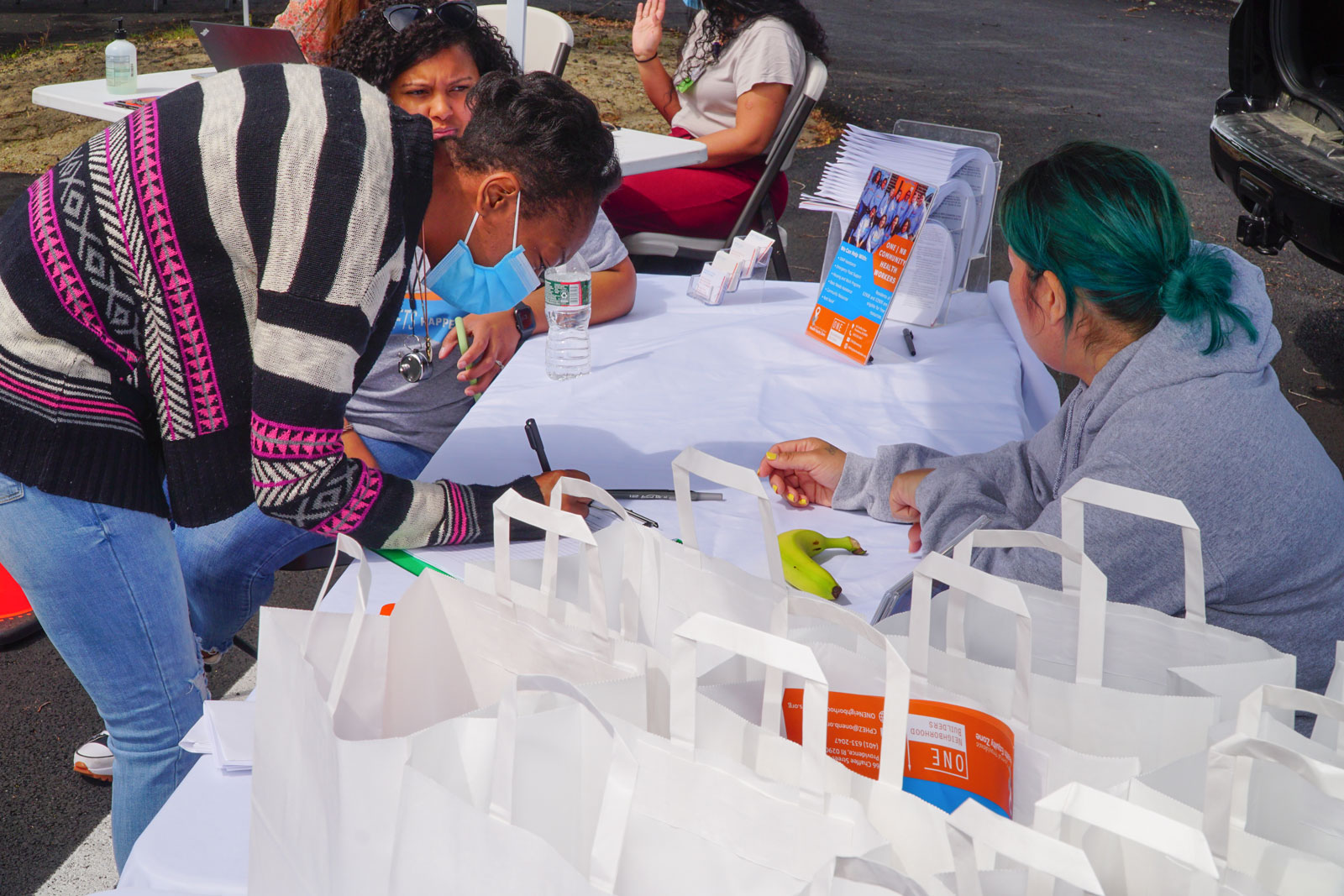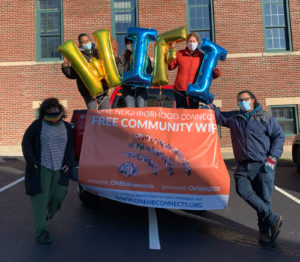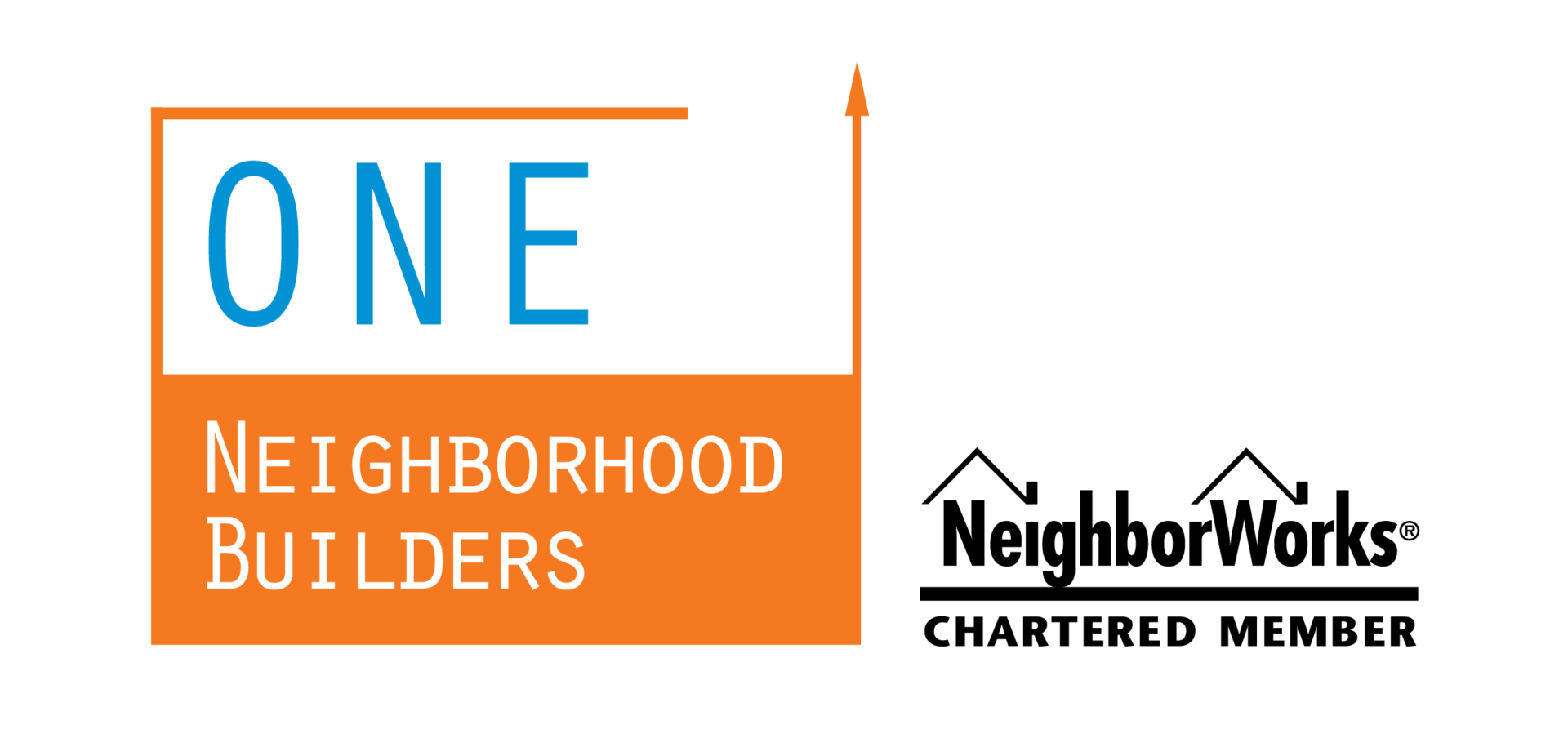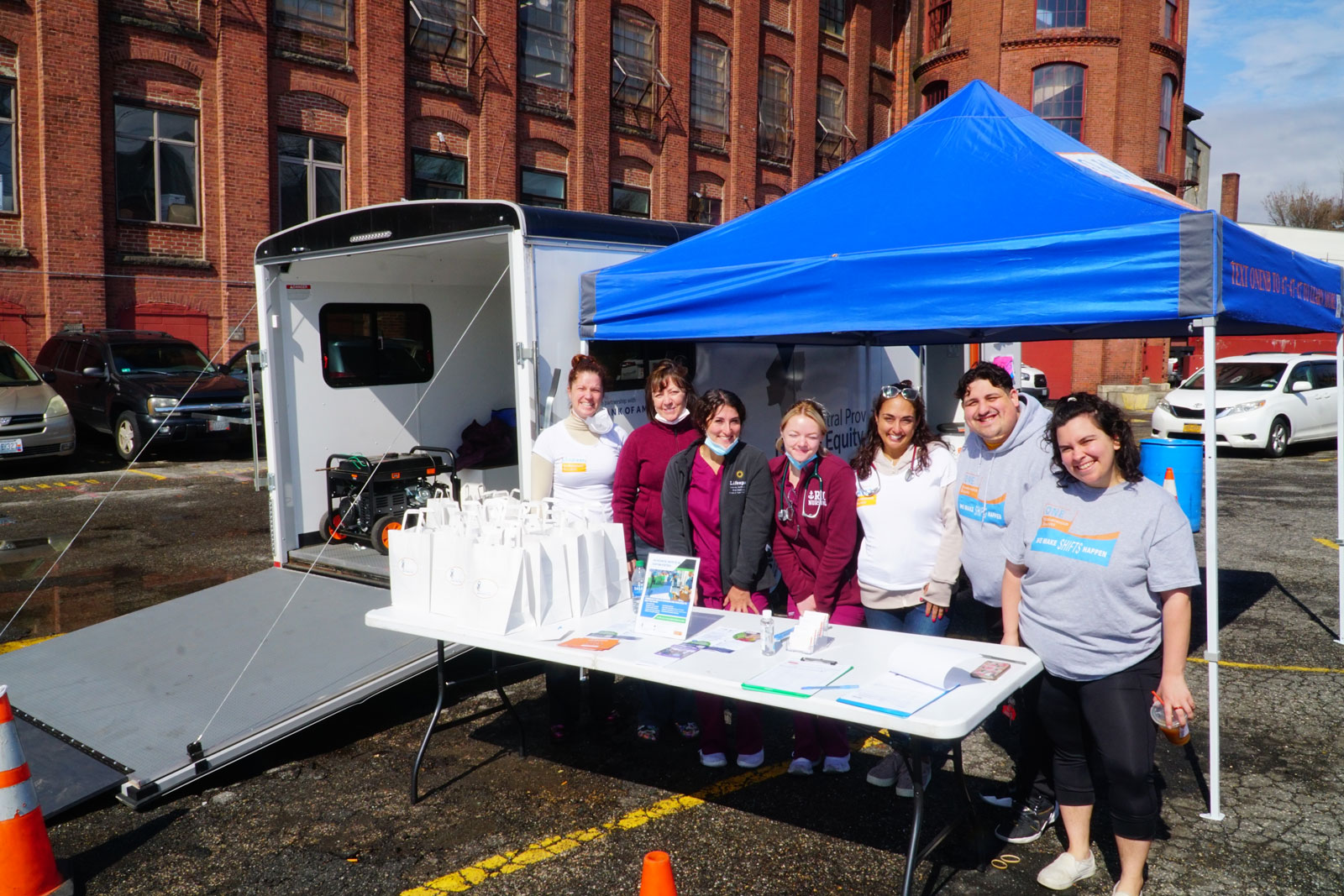
During the pandemic, a mobile health trailer staffed by health workers and staffers from ONE|NB offered residents of the Olneyville neighborhood of Providence information about rent relief, food assistance, help with paying their utilities, filing for health insurance, finding care for the uninsured, and other services. Photo by Stephen Ide, ONE|NB
Two years after the pandemic began, community development organizations reflect on what’s changed and how they’re moving forward. Some are still in crisis mode; others are refocusing their work.
By Amanda Abrams
Shelterforce
Chris Kreymeyer is frustrated.
The president and CEO of Beyond Housing points to his window where, every day in this St. Louis neighborhood, he watches children walk to and from school. They’re low-income children, mostly Black, coming from families that often face multiple challenges.
The view is killing Kreymeyer. “I’m tired of seeing another generation of kids that won’t live up to their full potential,” he says.
Like other community development organizations around the country, Beyond Housing was deeply involved in food distribution and other emergency services during the thick of the pandemic. That was important work, he concedes, but it didn’t address the root inequities that have long existed and that COVID-19 lay bare.
Now that the pandemic finally seems to be ebbing, Kreymeyer is unwilling to go back to how things used to be. “If as a community writ large we feel good about [providing free food], then we’re missing the point. It’s like, ‘Is that all we got?’” he asks. “We have to do things differently.”
He’s not alone. As the pandemic wanes, or at least becomes woven into the fabric of regular life, many community development organizations around the country are experiencing something of an existential crisis.

Staffers from ONE|NB spell out WiFi in balloons at a parade they held when the network launched, the day after Thanksgiving, 2020. Photo courtesy of ONE|NB
Finding a Way to Plan for the Future
Some groups, though, were able to carve out space even during the fog of the pandemic to develop bigger-picture initiatives that feel aligned with their long-term missions.
For example, with homeowners stuck inside for months, interest in emergency home repair grants swelled in many places. In Warren, Ohio, when the city’s waiting list filled up, Trumbull Neighborhood Partnership wound up getting involved. Eventually, the group found state and foundation funding to scale up the work.
“Emergency” or not, providing home repair grants feels aligned with the group’s overarching objectives, says Matt Martin, the organization’s executive director. “It keeps people in their homes, which is good for the community—it’s homeownership preservation.” That work will be a priority in the future, says Martin.
Similarly, One Neighborhood Builders in Providence, Rhode Island, launched a free community wireless network early in the pandemic for neighborhood residents who otherwise wouldn’t have had internet access. The project was started in the spirit of a short-term emergency, but the organization is committed to maintaining it for five years—hoping that after that, a wider broadband effort will make their work obsolete.


